Pulque: Ancient Drink Of The Gods Is Popular Again But It Has Odd Side-Effects
A. Sutherland - AncientPages.com - Pulque is Mexico's oldest alcoholic beverage. Known as the "Drink of the Gods, it was drunk by the Maya, Aztecs, Huastecs, and other cultures in ancient Mesoamerica.
Pulque vessel in the shape of a monkey, Aztec, 1200–1520, onyx, Dumbarton Oaks Museum , Washington, DC - Image credit: TomR - CC BY-SA 3.0
The ancient drink has been re-introduced to our modern society, and its popularity is increasing, but if you want to taste it, be warned, this is no ordinary beer. It has some quite odd side effects.
Pulque is made from fermented juice or sap of the maguey plant (Agave americana) and is only slightly alcoholic. Those who tried it say one can sit and drink Pulque for hours without getting drunk, but later, something odd happens. When you get up to leave, realize your legs don't work right. Your mind is clear, but your body doesn't work.
Pulque In Myths And Legends
Pulque is mentioned in several myths and legends in Mesoamerica. Being the ancient ancestor of mescal and tequila, Pulque predates the arrival of the Spanish by at least 1,500 years, and the drink has long been considered sacred.
Ancient myths and legends tell that Pulque was given to humans by the great god Quetzalcoatl, who noticed that people seemed miserable instead of singing and dancing. So, he decided to give them something to brighten their days, and this was the beginning of how Pulque entered the lives of people in Mesoamerica.
Mayahuel, the Aztec goddess of the maguey, is often depicted as a beautiful young woman associated with fertility and sometimes referred to as 'the woman of 400 breasts', no doubt about the milk-like sap of the plant.
She was also the goddess of pulque, an alcoholic beverage made from agave juices.
Depiction of the goddess Mayahuel.
In ancient times, Pulque was not a drink for poor people but reserved for the highest social classes. Later, it became the drink of poor farmers.
Ancient people drinking Pulque are depicted on several relics and monuments. The Zapotec civilization (500-900 CE) had monuments showing scenes from wedding ceremonies where guests drank Pulque.
The earliest depictions in Mesoamerican art of Pulque are from the great city of Teotihuacan, at its peak between 300 and 550 CE. Stone relief carvings show masked figures with milky drops falling from their mouths, and one mask has a background of maguey leaves.
Pulque Used As Medicine
In more modern times, for some Indians of the central highlands, Pulque was once at the center of their religion and the cure for just about everything – from diabetes and intestinal problems to sleep disorders.
Agave plant in Oaxaca state. Credit: Adobe Stock - Thanh
The drink is said to contain plenty of probiotics, protein, various vitamins, and minerals. In its long and strange life, it's been used as an aphrodisiac, a fuel for celebrations, and to ease the pain of sacrificial victims in ancient times.
Antonio Gomez, a pulque producer in the community of Santiago Cuautlalpan in Tepotzotlan municipality just north of Mexico City, produces the drink the old-fashioned way by hollowing out the pulpy heart of the region's maguey plant and using a sort of suction pipe to pull out the sugary liquid that collects in the hollow section. The beverage at that stage, known as "aguamiel," is barely alcoholic, if at all.
Gomez says that Pulque was once served in some parts of Mexico in the morning and for health reasons.
"The old people, they say that before, they didn't drink coffee; they had some pulque, tortillas, and beans, and that was their breakfast," he said.
"A lot of doctors are prescribing it as medicine," Gomez said. "A diabetic person, for example, should drink strong pulque."
Because it's so vitamin- and mineral-rich, it was once consumed in arid parts of Mexico when water was scarce, and some pregnant women and new mothers still drink it to promote health and lactation.
Today, Pulque is considered a nutrient-rich drink and has come among a new generation of Mexicans. It is said that old habits die hard, which is undoubtedly true for Pulque, who has survived for 2,000 years.
Written by – A. Sutherland - AncientPages.com Senior Staff Writer
Updated on January 17, 2024
Copyright © AncientPages.com All rights reserved. This material may not be published, broadcast, rewritten or redistributed in whole or part without the express written permission of AncientPages.com
More From Ancient Pages
-
 Early Humans Reached Northwest Europe 45,000 Years Ago – New Research Shows
Human Beginnings | Jan 31, 2024
Early Humans Reached Northwest Europe 45,000 Years Ago – New Research Shows
Human Beginnings | Jan 31, 2024 -
 Riddle Of The Ancient Lost City Beneath Missouri – A Puzzling Discovery
Civilizations | Mar 21, 2022
Riddle Of The Ancient Lost City Beneath Missouri – A Puzzling Discovery
Civilizations | Mar 21, 2022 -
 Who Were Persian ‘Sparabara’?
Featured Stories | Aug 28, 2017
Who Were Persian ‘Sparabara’?
Featured Stories | Aug 28, 2017 -
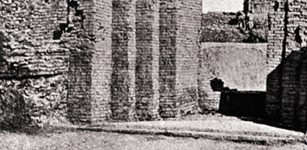 Sumerian City Of Girsu: Political, Religious Center With Large Archive Of Thousands Of Cuneiform Tablets
Civilizations | Jul 21, 2023
Sumerian City Of Girsu: Political, Religious Center With Large Archive Of Thousands Of Cuneiform Tablets
Civilizations | Jul 21, 2023 -
 Neith – Fearsome Egyptian Mother Of The Gods – Creator Of Sun God Ra, His Archenemy Serpent God Apophis And The Universe
Egyptian Mythology | Jul 9, 2018
Neith – Fearsome Egyptian Mother Of The Gods – Creator Of Sun God Ra, His Archenemy Serpent God Apophis And The Universe
Egyptian Mythology | Jul 9, 2018 -
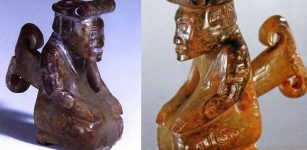 Peculiar Artifact Discovered In Tomb Of The Warrior Queen Fu Hao
Artifacts | Oct 26, 2018
Peculiar Artifact Discovered In Tomb Of The Warrior Queen Fu Hao
Artifacts | Oct 26, 2018 -
 Nova Anglia: The Anglo-Saxon New England In The East
History | Jun 13, 2022
Nova Anglia: The Anglo-Saxon New England In The East
History | Jun 13, 2022 -
 New Egyptian Dinosaur Helps To Reconstruct Evolution Of Dinosaurs In Africa
Archaeology | Jan 30, 2018
New Egyptian Dinosaur Helps To Reconstruct Evolution Of Dinosaurs In Africa
Archaeology | Jan 30, 2018 -
 Isle Of May Was A Pictish Healing Center – Monks Used Herbs To Treat Sick And Dying People
Archaeology | Feb 16, 2018
Isle Of May Was A Pictish Healing Center – Monks Used Herbs To Treat Sick And Dying People
Archaeology | Feb 16, 2018 -
 Mysterious Kaali Crater And The Holy Lake – Sacred Ancient Places In Estonia
Featured Stories | Jan 19, 2018
Mysterious Kaali Crater And The Holy Lake – Sacred Ancient Places In Estonia
Featured Stories | Jan 19, 2018 -
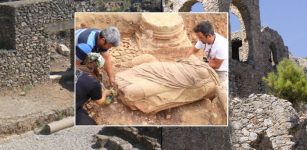 Roman-Era Female Statue Dated Back To 1,800 Years Ago Unearthed In Anemurium, Türkiye
Archaeology | Nov 14, 2023
Roman-Era Female Statue Dated Back To 1,800 Years Ago Unearthed In Anemurium, Türkiye
Archaeology | Nov 14, 2023 -
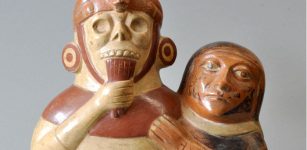 South American Musical Instruments Reflect Population Relationships – Archaeological Records Reveal
Archaeology | Sep 20, 2021
South American Musical Instruments Reflect Population Relationships – Archaeological Records Reveal
Archaeology | Sep 20, 2021 -
 Who Made The Mysterious Ancient Cave Paintings And Inscriptions In Oklahoma 2,500 Years Ago?
Featured Stories | Jul 23, 2024
Who Made The Mysterious Ancient Cave Paintings And Inscriptions In Oklahoma 2,500 Years Ago?
Featured Stories | Jul 23, 2024 -
 Massive Well-Preserved Second Temple-Era Aqueduct Unearthed In Jerusalem
Archaeology | Aug 29, 2023
Massive Well-Preserved Second Temple-Era Aqueduct Unearthed In Jerusalem
Archaeology | Aug 29, 2023 -
 12,000-Year-Old Archaeological Evidence Of Human-Dog Friendship In Alaska
Archaeology | Dec 5, 2024
12,000-Year-Old Archaeological Evidence Of Human-Dog Friendship In Alaska
Archaeology | Dec 5, 2024 -
 ‘Impossible’ Ancient Knowledge Of The Gods’ Star – First Observations – Part 1
Ancient Mysteries | Aug 29, 2021
‘Impossible’ Ancient Knowledge Of The Gods’ Star – First Observations – Part 1
Ancient Mysteries | Aug 29, 2021 -
 Cedar – Sacred Tree With Medicine Power In Native American Beliefs
Featured Stories | Aug 26, 2024
Cedar – Sacred Tree With Medicine Power In Native American Beliefs
Featured Stories | Aug 26, 2024 -
 Large 1,500-Year-Old Winepress Unearthed In Area Once Known For Wine production.
Archaeology | Oct 29, 2015
Large 1,500-Year-Old Winepress Unearthed In Area Once Known For Wine production.
Archaeology | Oct 29, 2015 -
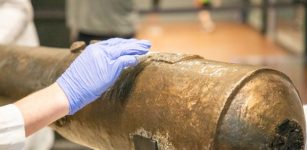 Anthropologists’ Quest To Save An Alamo Cannon
News | Aug 7, 2024
Anthropologists’ Quest To Save An Alamo Cannon
News | Aug 7, 2024 -
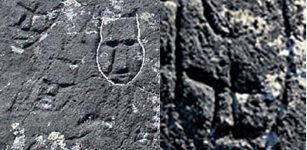 Dorset Culture: Mysterious Rock Carvings Of Qajartalik – Faces Of Unknown Beings
Civilizations | Sep 3, 2018
Dorset Culture: Mysterious Rock Carvings Of Qajartalik – Faces Of Unknown Beings
Civilizations | Sep 3, 2018



